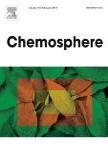版权所有:内蒙古大学图书馆 技术提供:维普资讯• 智图
内蒙古自治区呼和浩特市赛罕区大学西街235号 邮编: 010021

作者机构:College of Resources and Environment Sciences China Agricultural University Beijing100193 China Department of Applied Chemistry China Agricultural University 2 Yuanmingyuan West Road Haidian District Beijing100193 China
出 版 物:《Chemosphere》 (Chemosphere)
年 卷 期:2024年第361卷
页 面:142432页
核心收录:
学科分类:0830[工学-环境科学与工程(可授工学、理学、农学学位)] 0817[工学-化学工程与技术] 08[工学] 070203[理学-原子与分子物理] 0703[理学-化学] 0714[理学-统计学(可授理学、经济学学位)] 0814[工学-土木工程] 0701[理学-数学] 0702[理学-物理学]
主 题:Soils
摘 要:With the increase of Cu (II) content, its bioaccumulation becomes a potential pollution to the environment. It is necessary to design an economical and efficient material to remove Cu (II) without causing other environmental hazards. A novel material of alginate composite bead (ALG@NCDs) was synthesized by embedding N-doped carbon dots into pure alginate bead for the adsorption of Cu (II) from wastewater and contaminated soil. The initial concentration, the amount of adsorbent, temperature, adsorption time, and pH value were optimized for the adsorption of Cu (II). According to the Langmuir isothermal adsorption model, the maximum adsorption amount of the material to Cu (II) was 152.44 mg/g. The results of selective adsorption showed that ALG@NCDs had higher affinity to Cu (II) than to Pb (II), Co (II), Ni (II), and Zn (II). After five adsorption-desorption experiment, adsorption capacity of the ALG@NCDs was kept 89% of the initial adsorption capacity. Its Cu (II) adsorption mechanism was studied by density functional theory calculations. In addition, the material could effectively adsorb Cu (II) and release the phytonutrient Ca (II) simultaneously when applied to actual wastewater and soil. The fabricated ALG@NCDs would be a promising material for the adsorption of Cu (II) from wastewater or soil. © 2024 Elsevier Ltd